All about Geldreich's pine
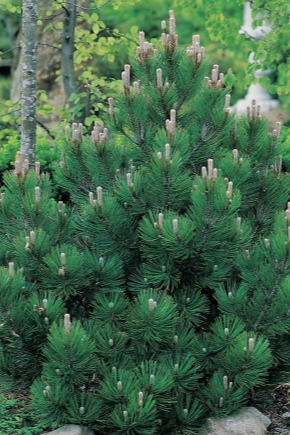
Geldreich Pine is an evergreen ornamental tree native to the southern mountainous regions of Italy and the west of the Balkan Peninsula. There the plant grows at an altitude of more than 2000 m above sea level, due to unfavorable conditions it takes a dwarf tree shape. Due to its spectacular appearance, pine is often used in landscape design in combination with other crops to create compositions of rare beauty.
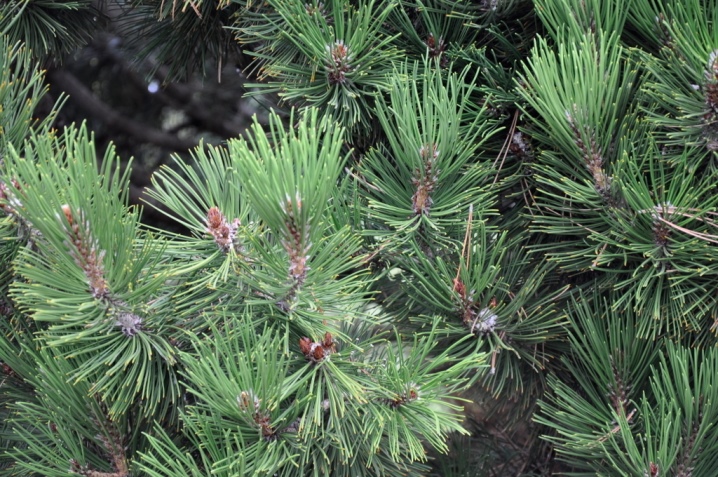
Description of the species
Bosnian pine can be considered a long-liver among other conifers. A tree was found in Bulgaria, which is about 1300 years old. On average, the lifespan of a culture is 1000 years, but its decorative varieties, depending on conditions, live no more than 50-100 years. The tree has the following characteristic features:
- it has a straight trunk with a diameter of 2 m, reaching a height of 15 m, in the wild the plant grows up to 20 m, in extreme conditions it becomes stunted;
- the volume of the crown is from 4 to 8.5 m, the shape of the aerial part is wide, spreading or narrower, conical;
- pine branches grow from the ground, where they can be slightly lowered down;
- needles are long, dark green and hard, pointed, 5 to 10 cm long, 2 mm wide, grow in pairs in bunches, because of this, the branches look especially fluffy;
- young plants have a light, glossy bark, which is probably why pine is also called white bark; after the needles fall off, leafy scales appear on young shoots, making the bark look like snake scales, and in old trees the color of the bark is gray;
- pine fruits - cones growing in 1-3 pieces, their length - 7-8 cm, oval, ovoid; the color is bluish at first, later turns yellow and darker, brown or black; the seeds are elliptical and reach 7 mm in length.
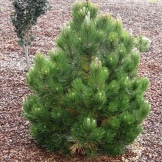
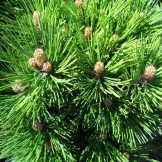
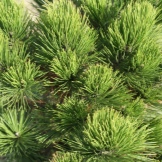
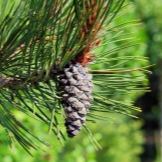
Pine grows slowly, the annual growth of young plants is 25 cm in height and about 10 cm in width. At the age of 15, tree growth slows down. Decorative forms of culture develop even more slowly, and they do not have the overall dimensions of a wild pine. For landscaping and decoration of gardens and parks, plants are generally taken no higher than 1.5 m. And Bosnian pine is also used in group plantings for landscaping chalk mountains and limestone outliers.
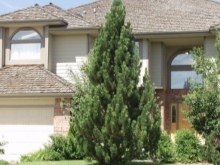


Varieties
The tree has several decorative forms that are in demand by gardeners.
- Widely spreading small wood "Compact jam" differs in height from 0.8 to 1.5 m. Its crown is dense, lush, pyramidal in shape, which remains with the plant for life. The needles have a deep green color, located in paired bunches, the surface of the needles is shiny. The tree must be planted in open spaces, since it is light-requiring. At the same time, pine is drought-resistant and unassuming to the composition of the soil.

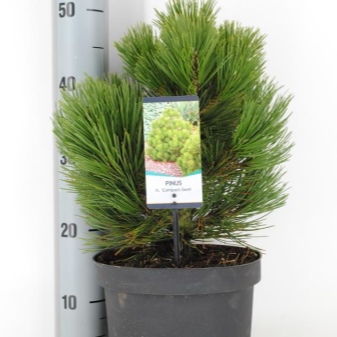
- "Malinki" - by the age of 10 this type of white pine grows to 1.6 m with a volume of green mass of 1 m. The crown has the form of a cone or column, the branches are not scattered to the sides, but neatly located near the alignment and directed upwards, the needles are dark green. The decorative culture is adapted to urban conditions, so it is successfully used to create landscape ensembles in squares and parks. Despite its good adaptability, with strong gas pollution and other negative external influences, it can greatly slow down in growth.
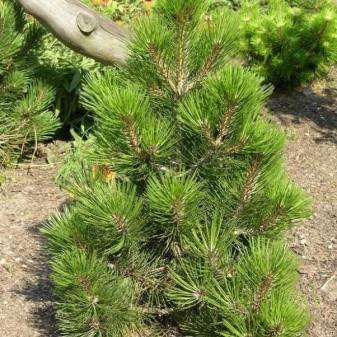
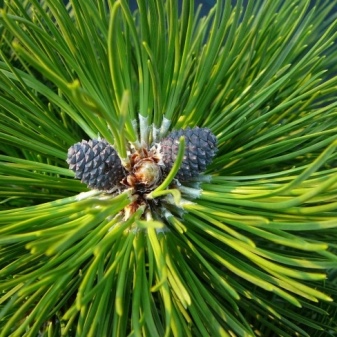
- Dwarf evergreen tree "Banderika" has the same height and crown size. At 10 years old, it grows to 75 cm.The shape of the plant is pyramidal, slightly sparse. The needles are long, deep green in color. The tree is unpretentious to the composition of the air, it can grow on soils with low fertility.
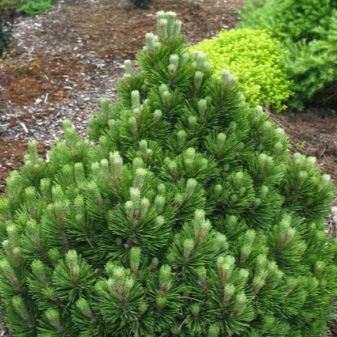
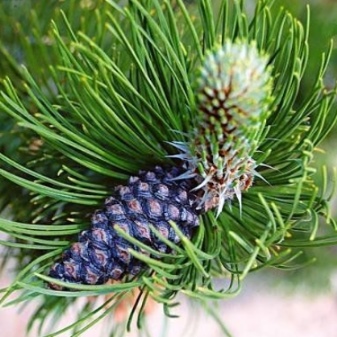
- Decorative pine "Satellite" quite high (2–2.4 m) and voluminous (1.6 m). The dense crown has a pyramidal, sometimes columnar shape with closely planted branches. Green needles are slightly twisted at the ends. The plant is undemanding to the soil, but it needs light, so it is important to provide lighting when growing.
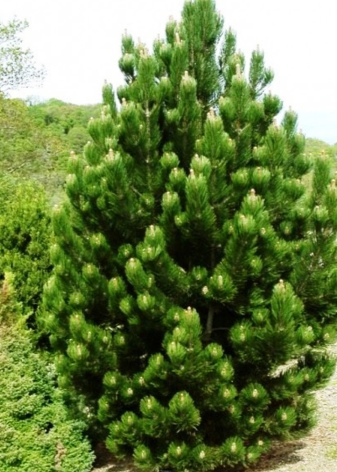
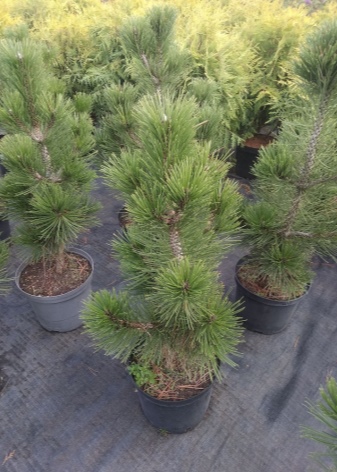
- An adult tiny tree "Schmidti" has a height of only 25 cm and a similar width of the green mass. Its crown is very beautiful in the form of a sphere, thick with hard and long needles of a light green tone. The culture tolerates water shortage easily, but excessive watering can destroy it. It is advisable to plant a tree in an open sunny area.
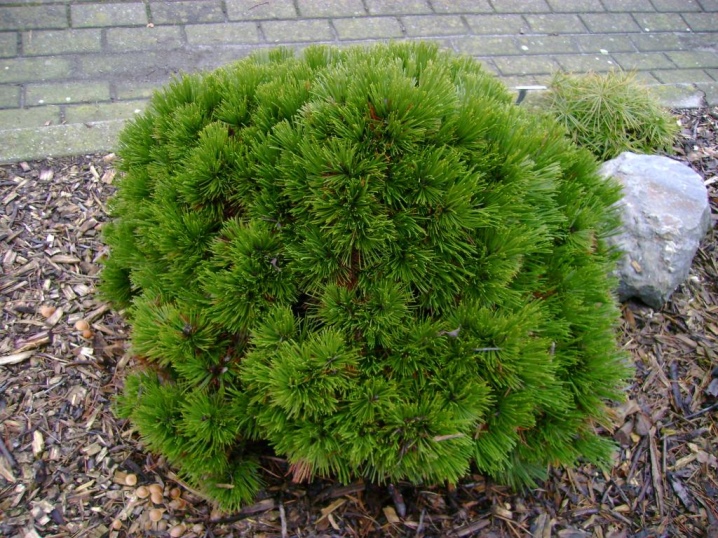
- Decorative version "Den Ouden" has spiky needles, a columnar or pyramidal shape of the aerial part. The size of the tree is medium - it can grow up to 1 m in width and up to 1.6 m in height. The plant is not afraid of drought, loves the sun, adapted to growing in urban areas.
Any of these conifers can be cultivated in the suburban area and create wonderful compositions with single and several trees, but for this it is important to know the rules for planting and keeping this type of pine trees.
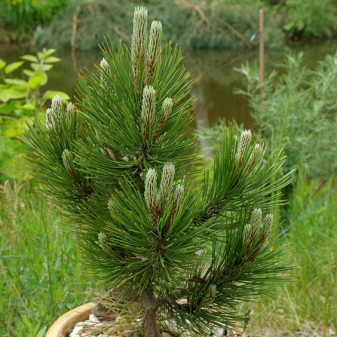
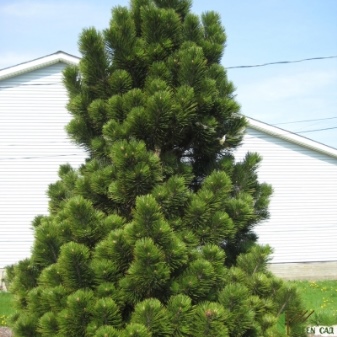
Landing
The Bosnian Geldreich pine can grow on rocky mountain slopes, but prefers calcareous soils. The tree is sun-loving and can tolerate a lack of water, but does not like drought, as well as excess moisture. Therefore, it should not be planted in lowlands and wetlands where plant roots rot. Pine propagates by seeds, but this is a long process, so experienced gardeners recommend purchasing young plants in special garden centers. When buying a small pine, you should consider its trunk and needles in order to exclude darkening and yellowing of the needles, minor damage. And also it is necessary to study the earthen lump with the root system - it should not be wet. It is better to plant a pine in the cool season - spring or summer, at low air temperatures.
The preparatory work is as follows:
- it is necessary to choose a place for planting that is sunny and open, taking into account the distance to other trees and residential buildings; depending on the variety, it can be more or less;
- you need to dig a hole 50 cm deep and 60 cm in diameter; lay a drainage layer of expanded clay, gravel or crushed stone on the bottom, its thickness should be at least 10 cm.
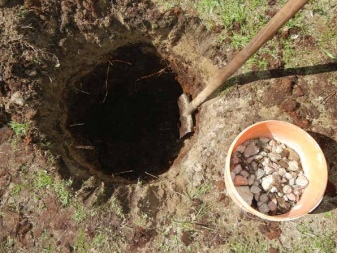
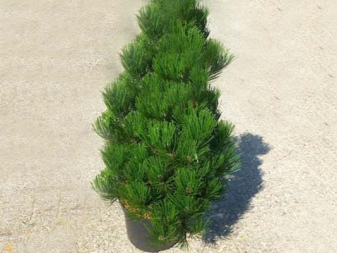
Disembarkation is carried out in the following way:
- a substrate is prepared from sod land (2 parts), humus (2 parts), sand (1 part);
- complex fertilizer for conifers is poured over the drainage, and prepared soil is placed on top of 1/3;
- the pine tree, together with the earthen lump, is taken out of the container and placed in the middle, carefully placing its roots; the root head should be at ground level;
- the pit should be filled with a nutrient mixture and compacted, avoiding voids at the roots.
After that, it is necessary to water the seedling well - for different types of pine 1-3 buckets are required. Young trees need to be irrigated once a week for 30 days, then irrigated as needed.

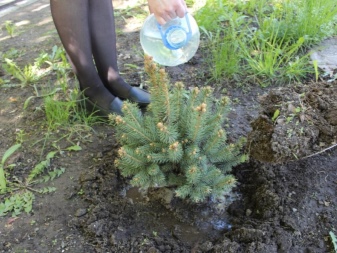
Correct care
Plant care rules are similar to the requirements for caring for other conifers, but have their own characteristics, namely:
- you can water the pine tree once every 15 days, in dry weather - more often and more abundantly, as well as spray the branches;
- loosening to a depth of 8–9 cm and removing weeds is necessary in the spring; in the summer, the procedure is carried out once every 30 days, preferably after it has rained;
- you need to fertilize pine annually with special products for spruces and pines;
- sanitary pruning is carried out in the spring, throughout the season it is necessary to inspect the branches of the plant and carry out preventive treatment against pests and diseases; in the fall, they make decorative pruning of the tree.
White pine, despite its cold resistance, is more suitable for cultivation in the southern regions, but small decorative varieties take root in the Middle Lane. In winter, they still have to be protected from frost. For this, special shelters are being built, including from the hot spring sun, which can scorch the branches of young plants.
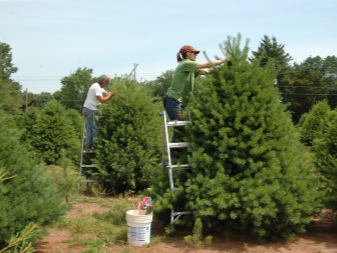

See the next video for the top 10 best mountain pine varieties.



































































The comment was sent successfully.